
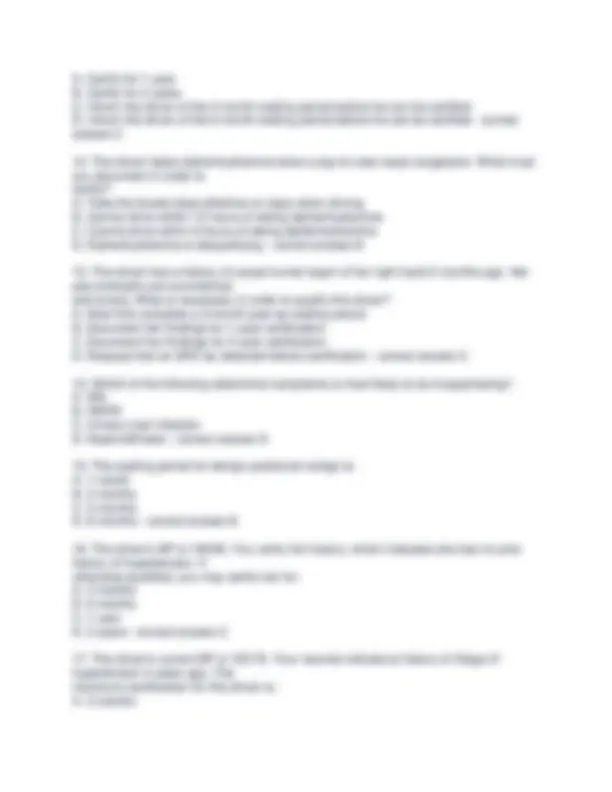
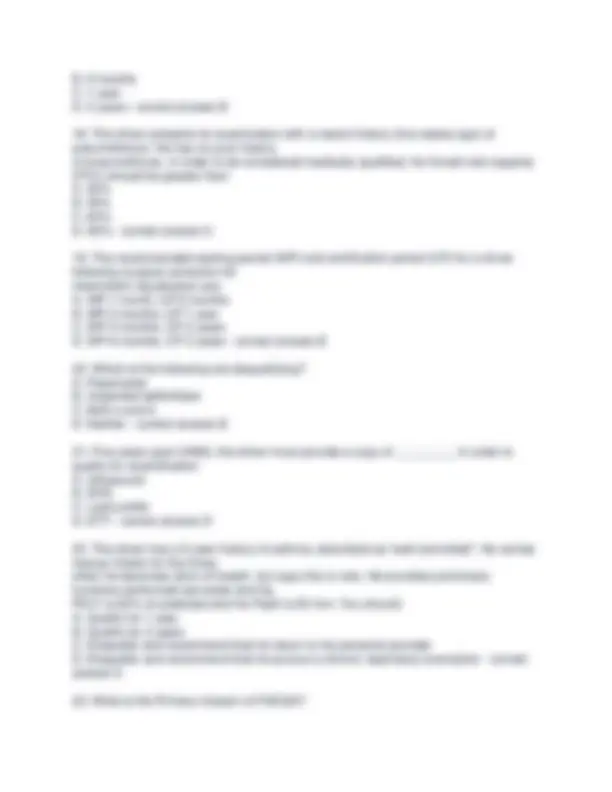
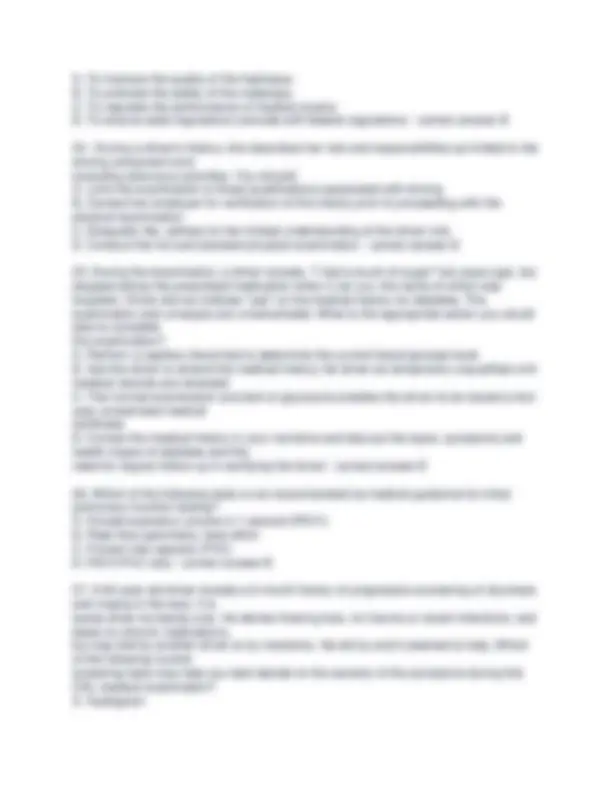

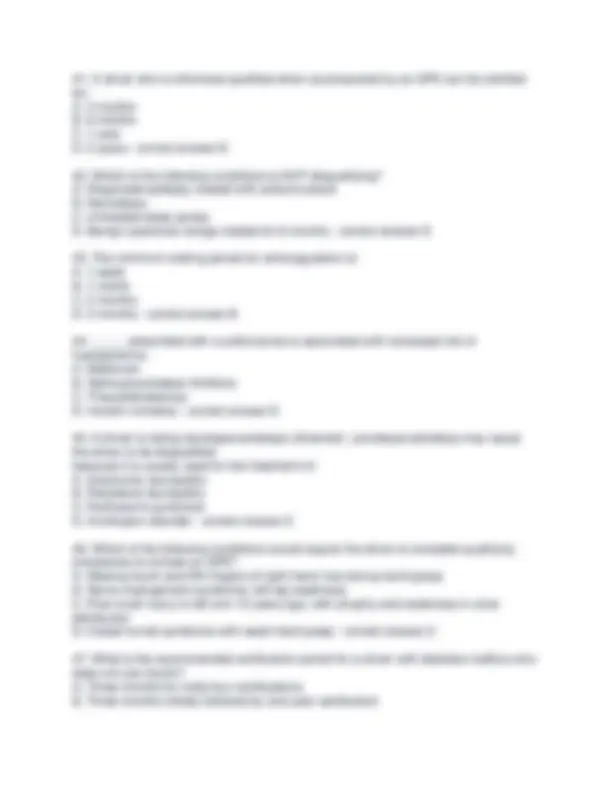
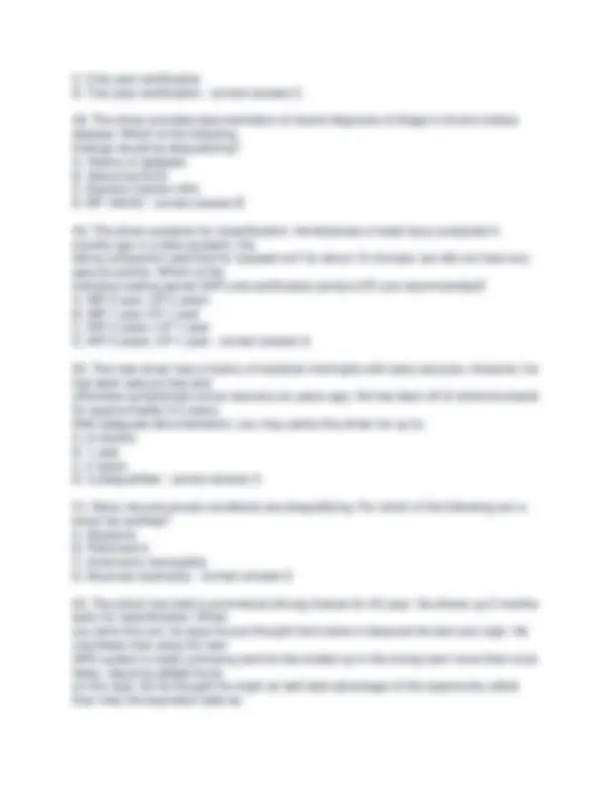
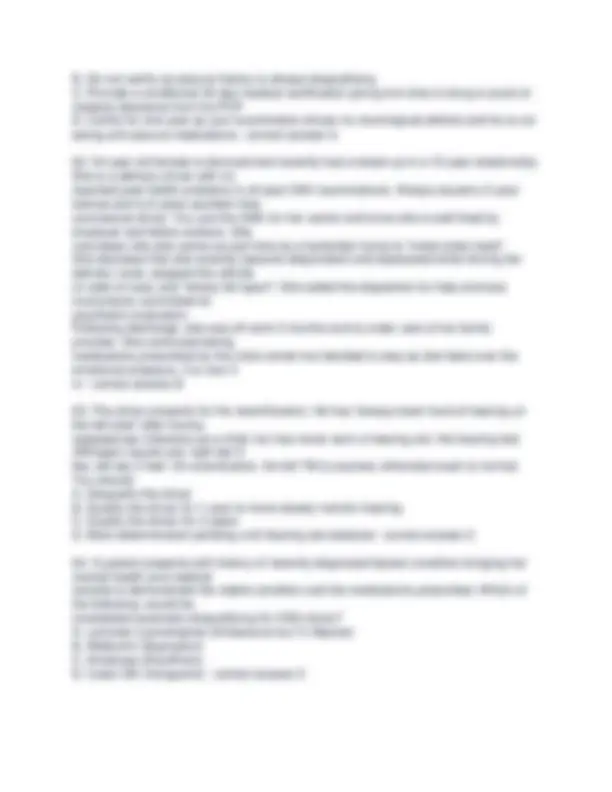
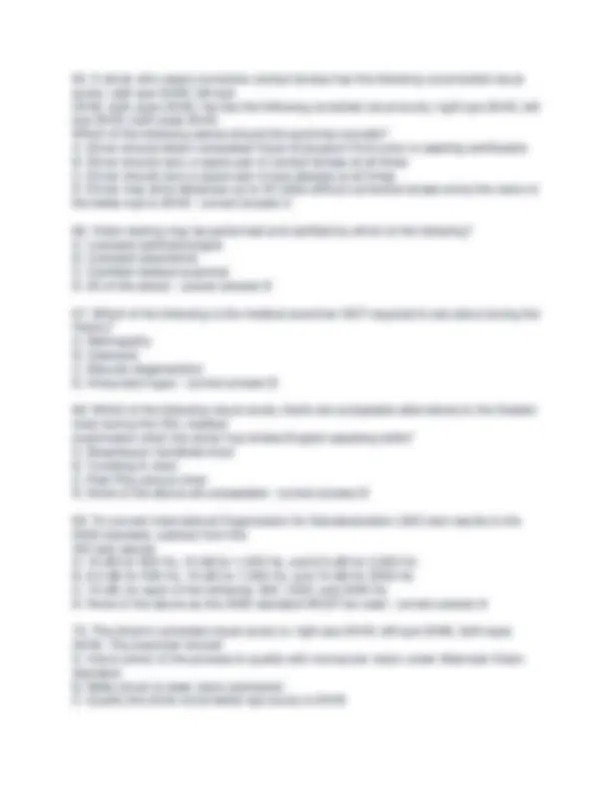
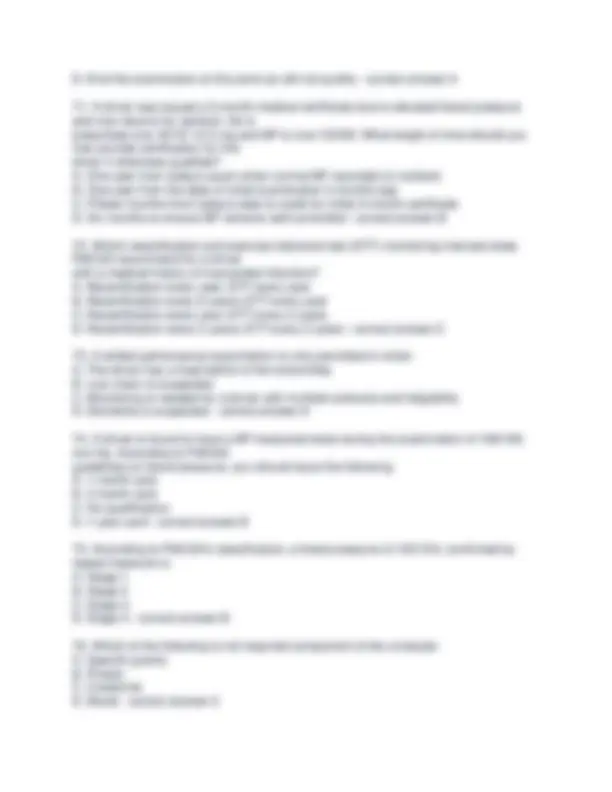
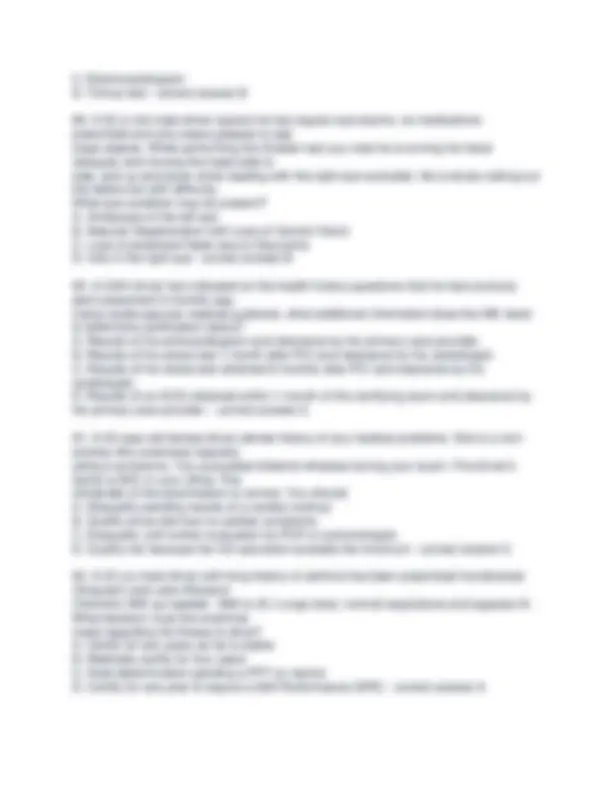
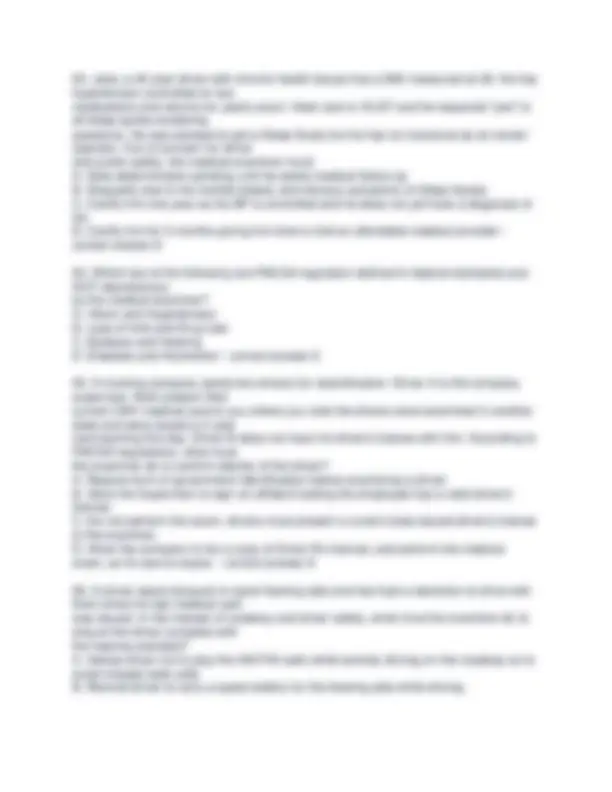
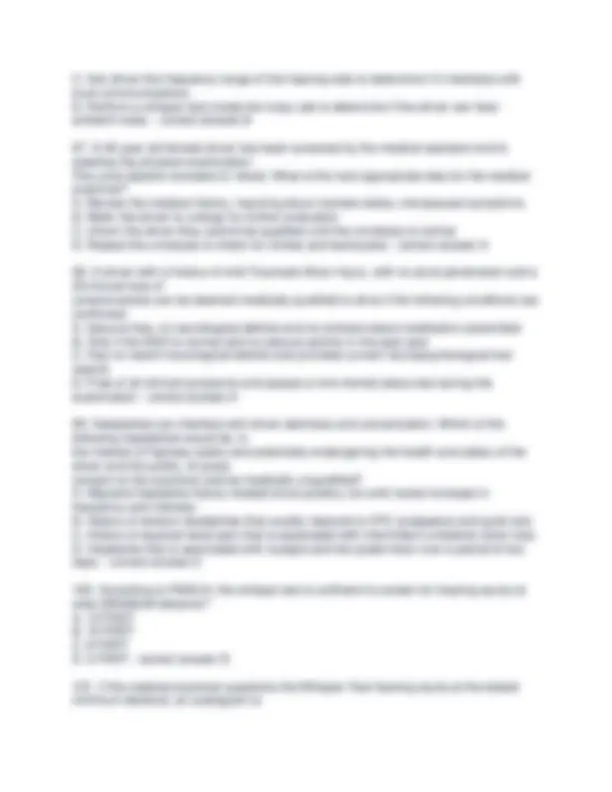
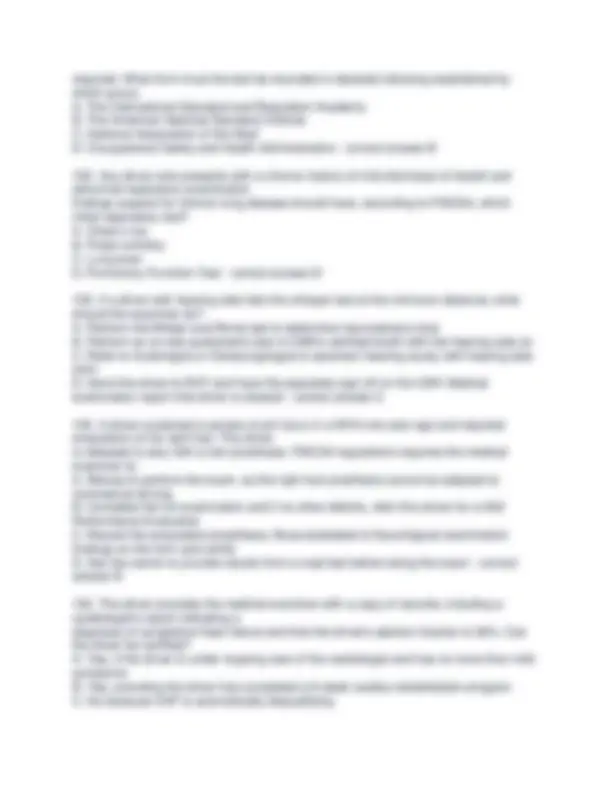
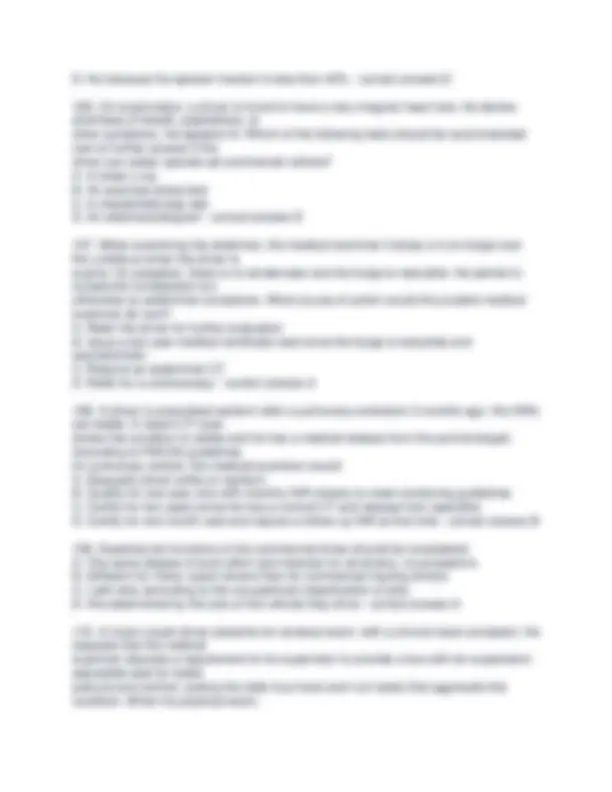
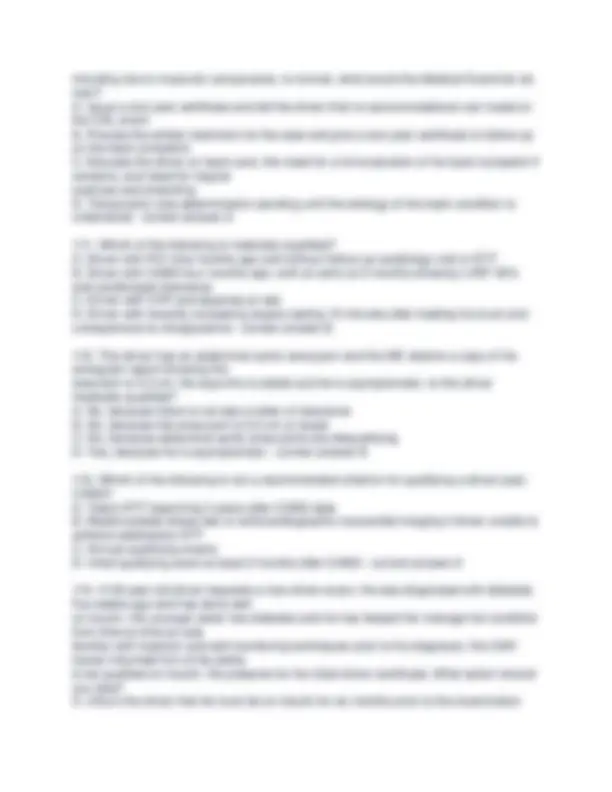
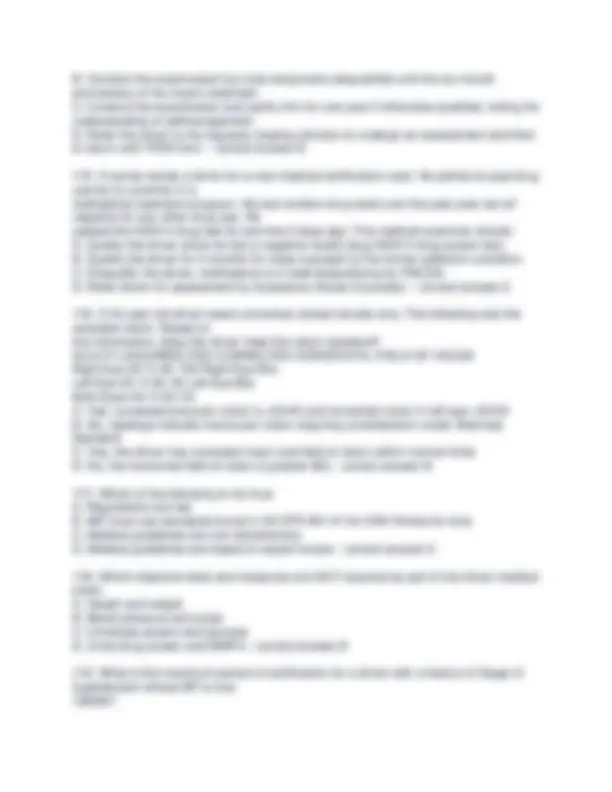
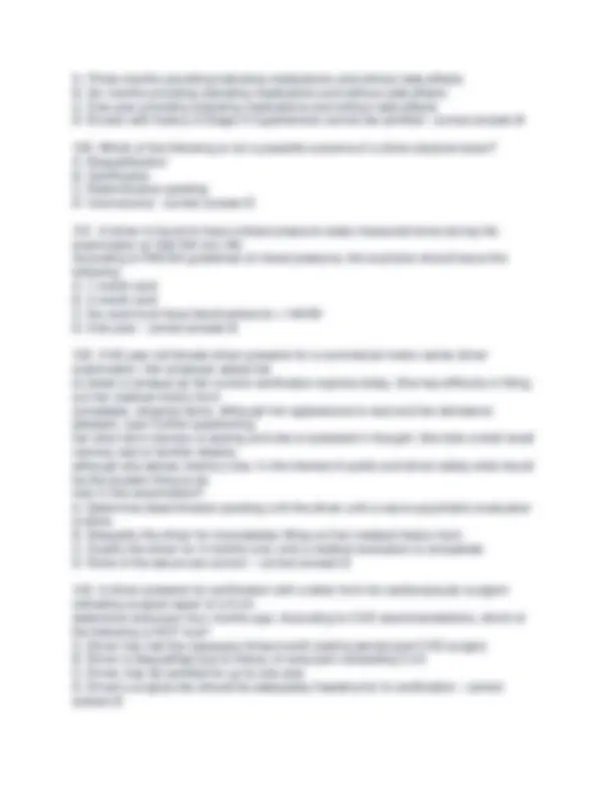
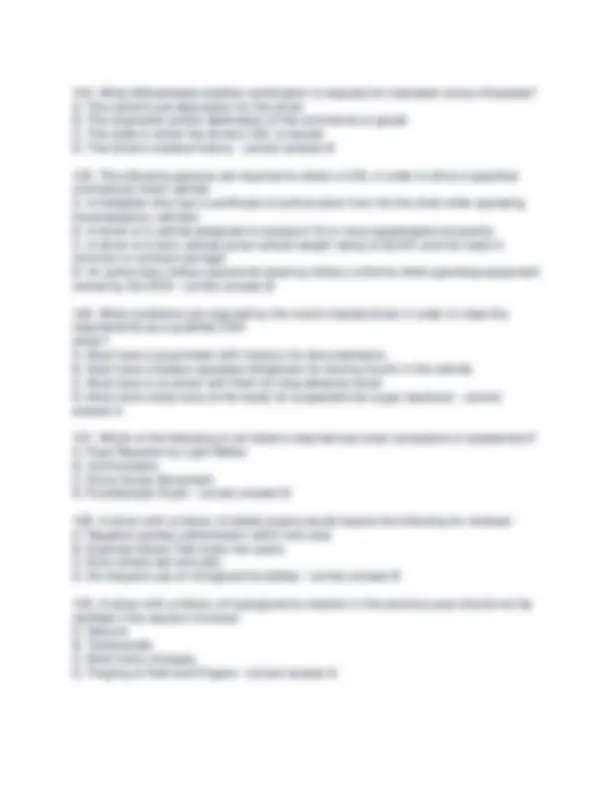
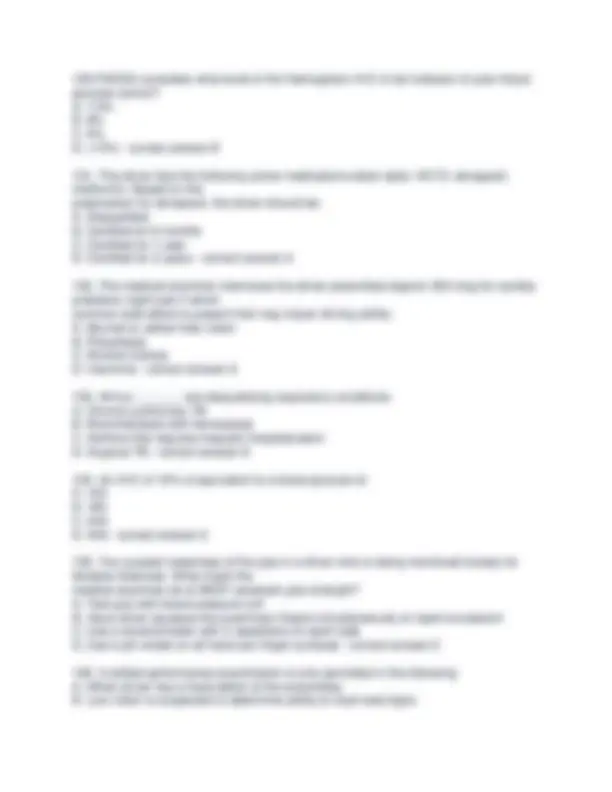
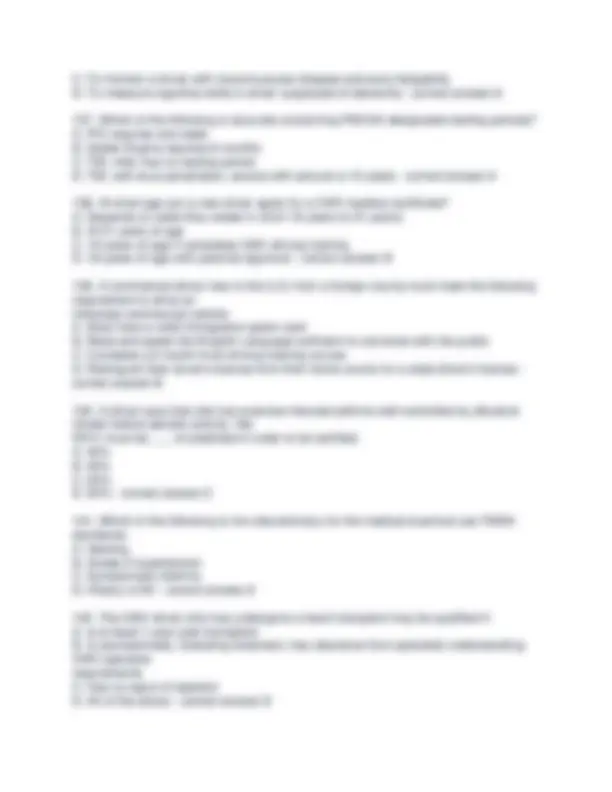
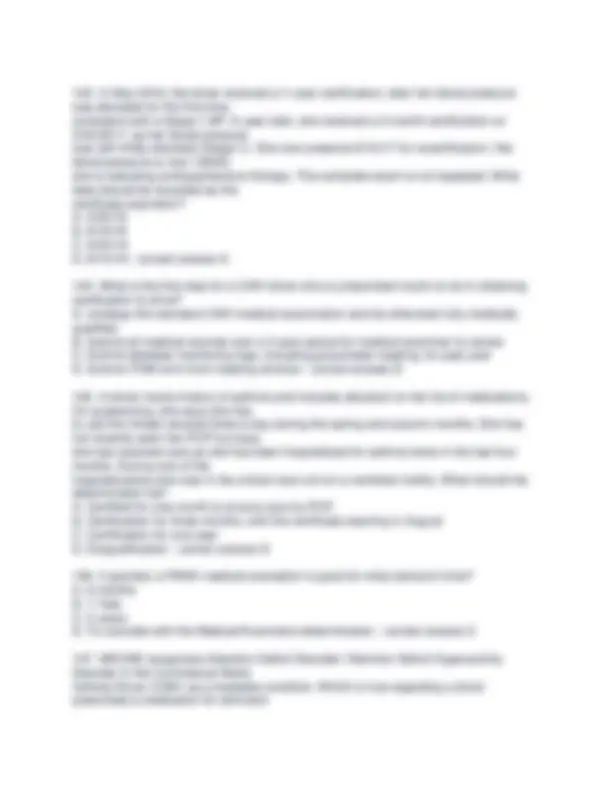
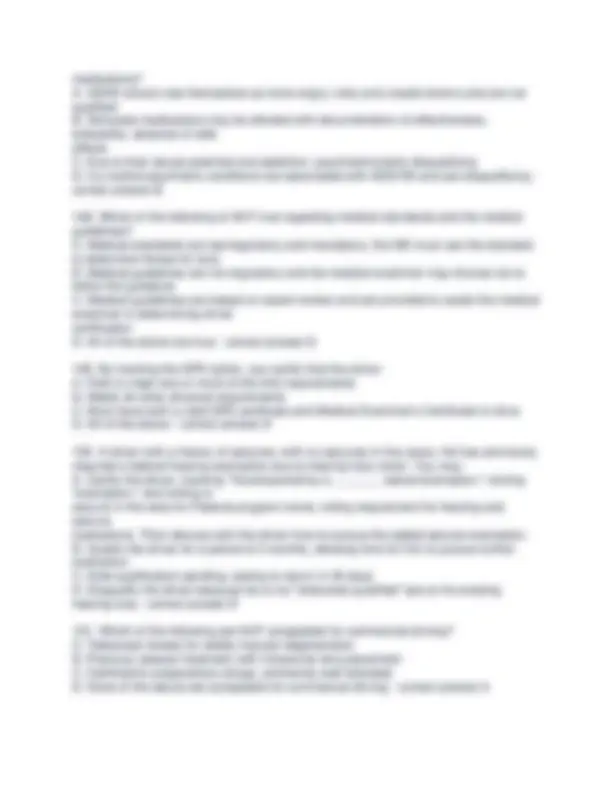
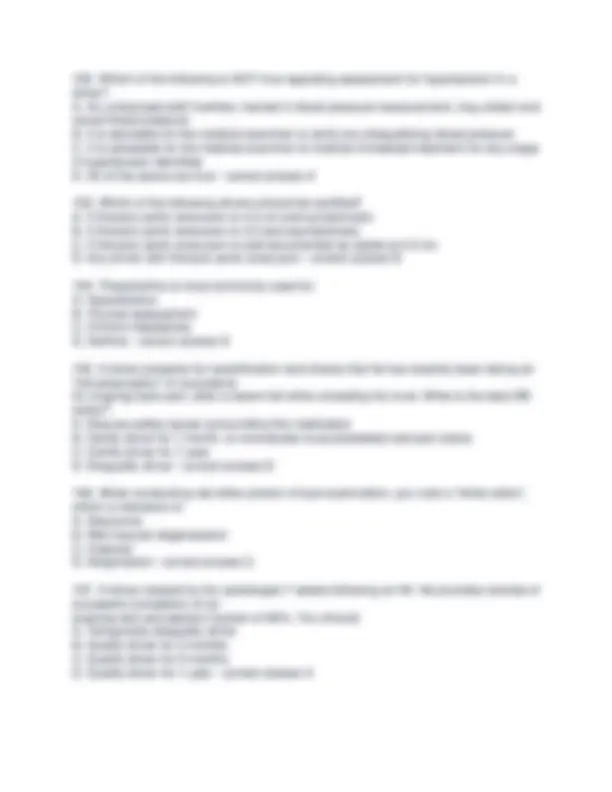
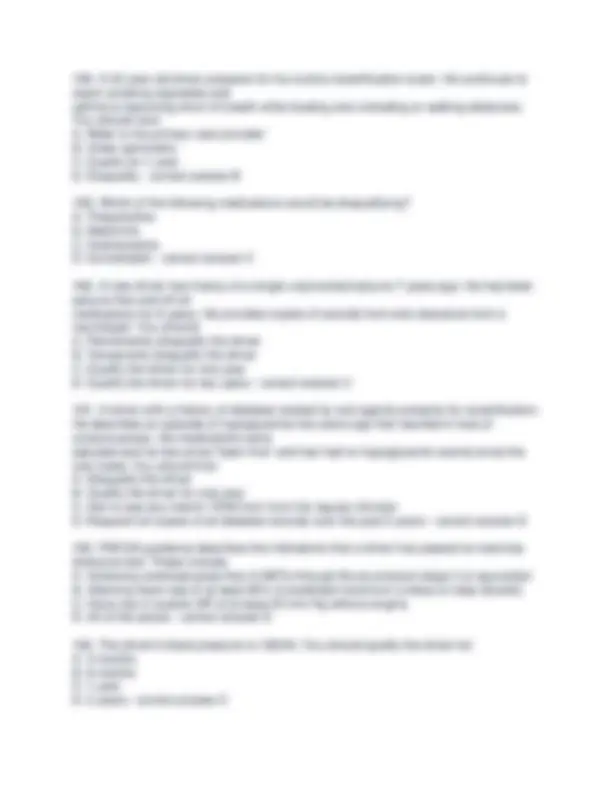
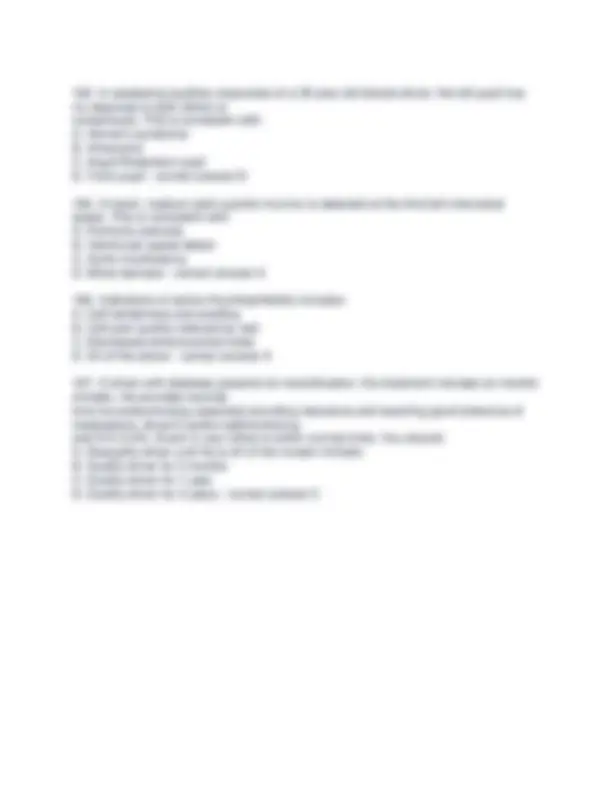


Study with the several resources on Docsity

Earn points by helping other students or get them with a premium plan


Prepare for your exams
Study with the several resources on Docsity

Earn points to download
Earn points by helping other students or get them with a premium plan
Community
Ask the community for help and clear up your study doubts
Discover the best universities in your country according to Docsity users
Free resources
Download our free guides on studying techniques, anxiety management strategies, and thesis advice from Docsity tutors
NRCME Exam With Latest Updated And Complete Solutions 2024.
Typology: Exams
1 / 33

This page cannot be seen from the preview
Don't miss anything!


























C. Hip extension D. Babinski reflex - correct answer.B
B. 6 months C. 1 year D. 2 years - correct answer.B
A. To improve the quality of the highways. B. To promote the safety of the roadways. C. To regulate the performance of medical exams. D. To ensure state regulations coincide with federal regulations - correct answer.B
During a driver's history, she describes her role and responsibilities as limited to the driving component and excluding strenuous activities. You should: A. Limit the examination to those qualifications associated with driving B. Contact her employer for verification of this history prior to proceeding with the physical examination C. Disqualify Ms. Jeffries for her limited understanding of the driver role D. Conduct the full and standard physical examination - correct answer.D
During the examination, a driver reveals, "I had a touch of sugar" two years ago, but stopped taking the prescribed medication when it ran out, the name of which was forgotten. Driver did not indicate "yes" on the medical history for diabetes. The examination and urinalysis are unremarkable. What is the appropriate action you would take to complete this examination? A. Perform a capillary blood test to determine the current blood glucose level B. Ask the driver to amend the medical history; list driver as temporarily unqualified until medical records are reviewed C. The normal examination and lack of glycosuria enables the driver to be issued a two‐ year unrestricted medical certificate D. Correct the medical history in your narrative and discuss the signs, symptoms and health impact of diabetes and the need for regular follow‐up in certifying the driver - correct answer.D
Which of the following tests is not recommended as medical guidance for initial pulmonary function testing? A. Forced expiratory volume in 1 second (FEV1) B. Peak flow spirometry, best effort C. Forced vital capacity (FVC) D. FEV1/FVC ratio - correct answer.B
A 60 year old driver reveals a 6 month history of progressive worsening of dizziness and ringing in the ears. It is worse when he bends over. He denies hearing loss, no trauma or recent infections, and takes no chronic medications, but was told by another driver to try meclizine. He did try and it seemed to help. Which of the following routine screening tests may help you best decide on the severity of the symptoms during this CDL medical examination? A. Audiogram
B. Employers who pay for the exam as part of the employee's conditions of employment are entitled to a copy of the CMV Medical Examination Report without a signed release by the driver C. The CMV Medical Examination Report is treated the same as any other confidential medical information and must have a signed release by the driver. D. The Driver is never permitted to have a copy of the CMV Medical Examination Report due to the increase in fraudulent documents being circulated. - correct answer.C
today is 138/88, with regular pulse at 88. He is slightly flushed. Chest exam reveals grade II/VI murmur and S4. During the - correct answer.A
C. One year certification D. Two year certification - correct answer.C
he also has trouble staying on schedule. For many of the history questions, he provides flippant responses rather than specifics and is unable to recall three words five minutes later. You should: A. Order a brain scan B. Contact the motor carrier for recent drug test results C. Indicate "determination pending" and tell him he must return within 45 days with medical clearance in order to continue driving when his current certification expires D. Disqualify th - correct answer.D
B. Do not certify as seizure history is always disqualifying C. Provide a conditional 30 day medical certification giving him time to bring in proof of medical clearance from his PCP D. Certify for one year as your examination shows no neurological deficits and he is not taking anti‐seizure medications - correct answer.A
C. Ask driver the frequency range of the hearing aids to determine if it interferes with truck communications. D. Perform a whisper test inside the noisy cab to determine if the driver can hear ambient noise. - correct answer.B